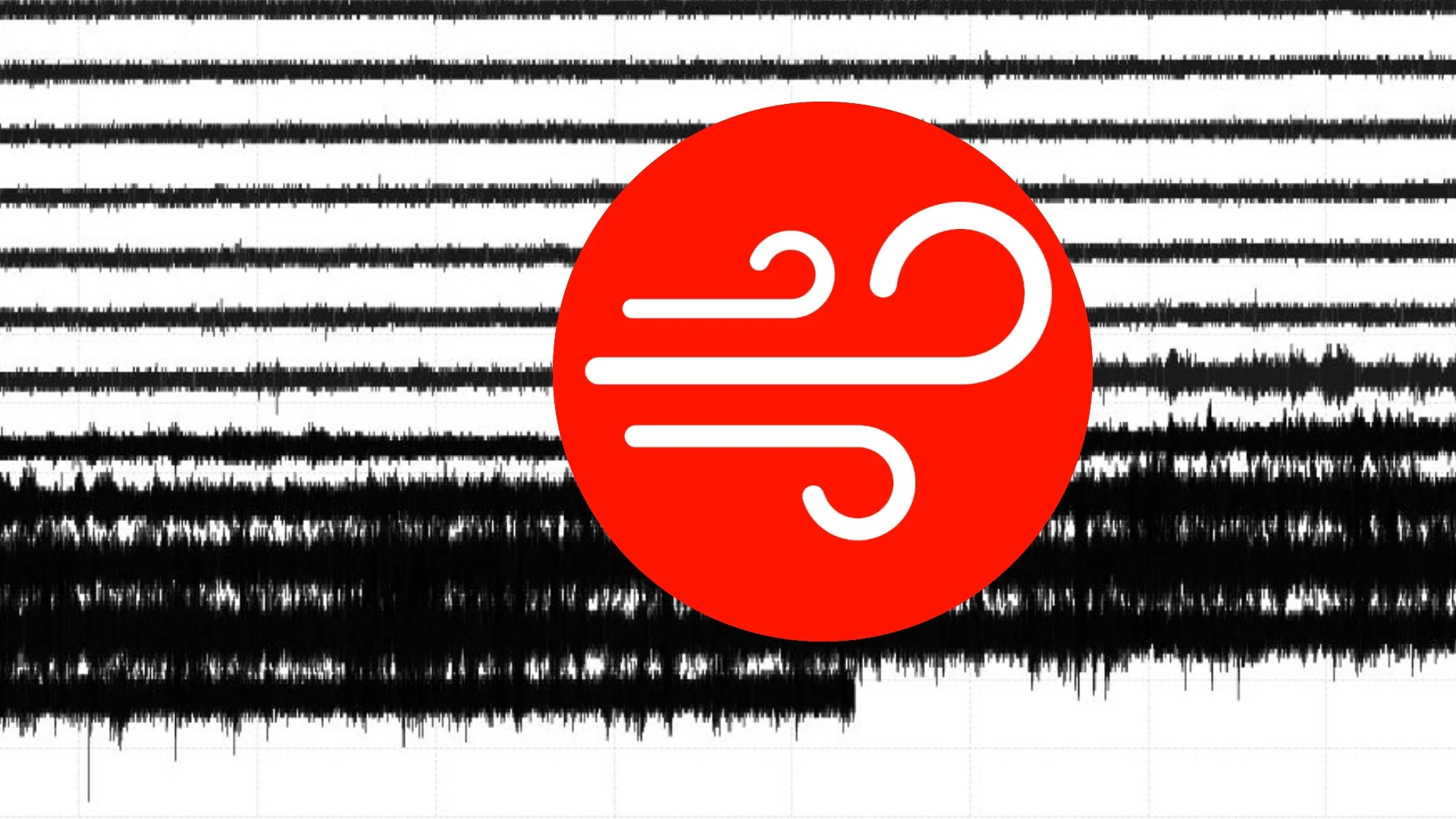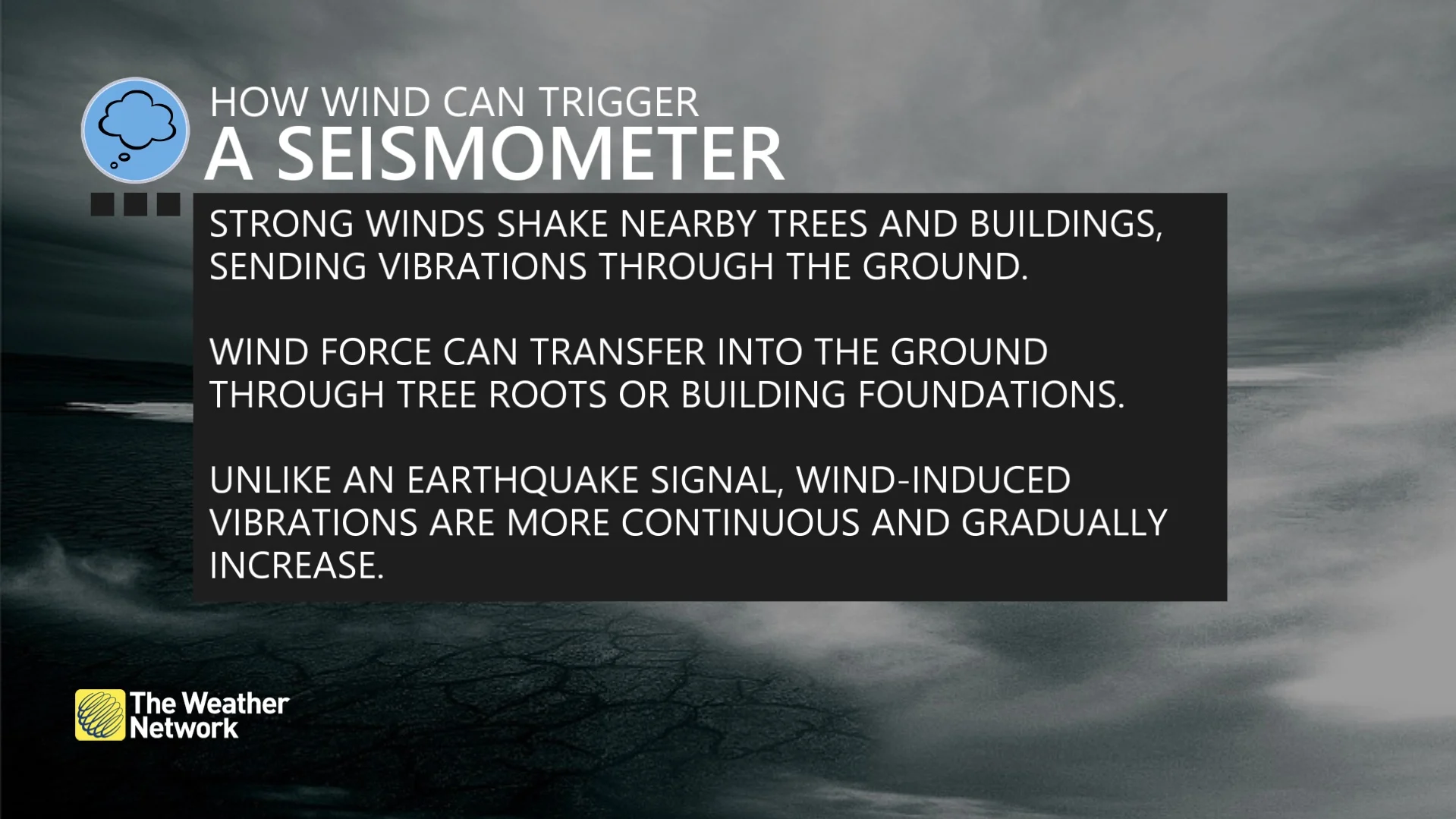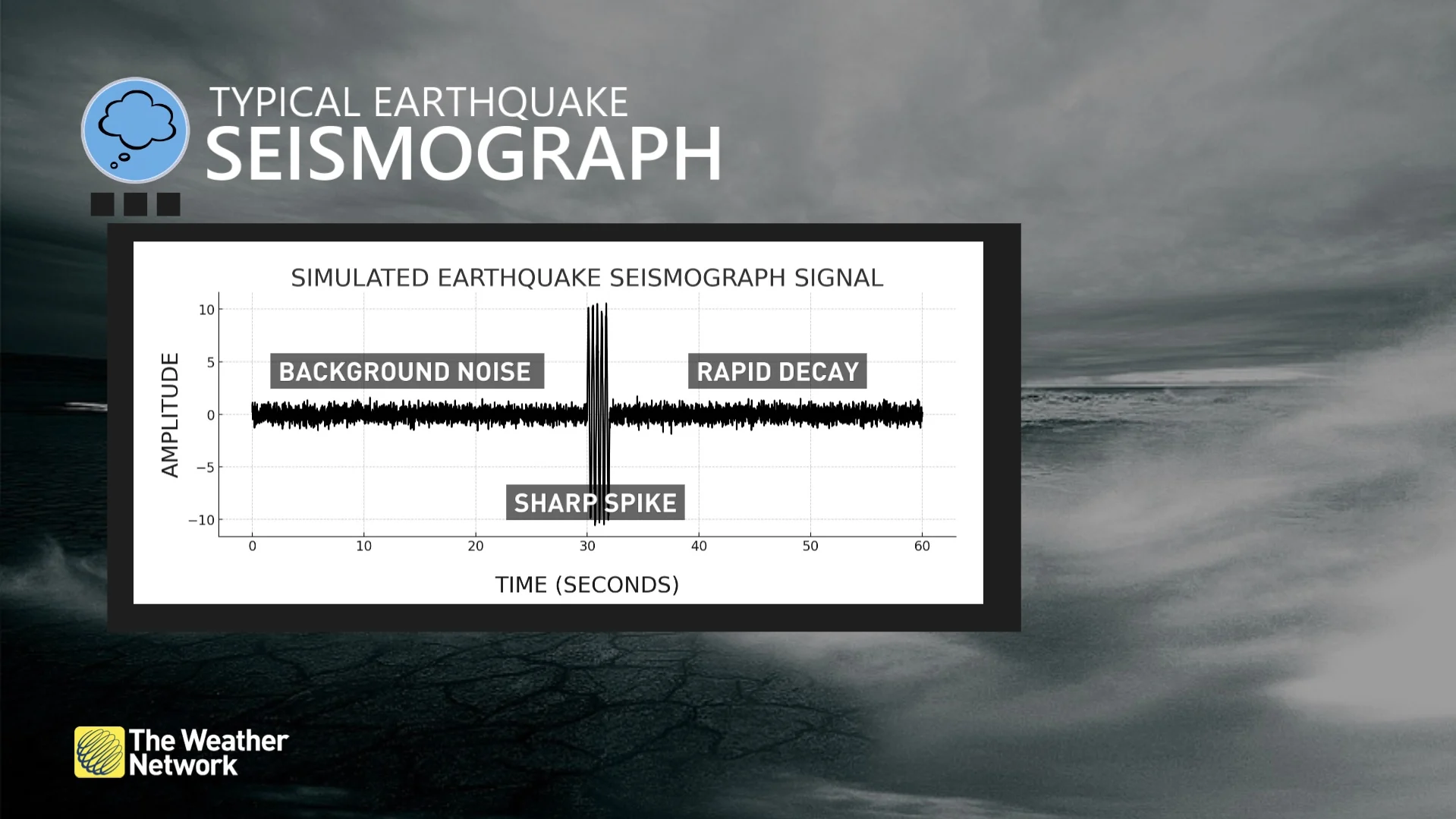
It was so windy in this B.C. city that the ground shook
The potent winds that exceeded 100 km/h on Monday shook more than just trees. Get the science behind how seismographs managed to pick up the power of the B.C. windstorm
Wind gusts can easily knock trees, buildings, trucks and people over when they're strong enough. Well, they even have the power to shake the ground in a manner that seismographs can record them.
RELATED: Boat and truck-tipping winds: B.C. crews work to restore power Tuesday
That's what happened in Victoria, B.C., on Monday during a wicked windstorm that resulted in significant power outages, which are still being restored by BC Hydro crews as of Tuesday afternoon.
How strong was the wind gust in Victoria? The latest data indicates a 108 km/h wind gust was picked up at a local weather station.

The winds were part of a storm that came to fruition from a very strong Pacific frontal system that moved across the B.C. coastline. The event also generated a short period of heavy rain to coastal areas and considerable alpine snow.
At one point, the outages affected nearly 300,000 customers. The latest on the restoration efforts from BC Hydro can be found here.
How did a seismograph pick up a wind gust?
Seismographs are designed to detect vibrations caused by seismic activity, a.k.a., earthquakes.
Below, a graphic explains how wind can trigger a seismometer.

Seismometers are quite sensitive, and occasionally pick up other vibrations and human activities such as loud concerts and heavy traffic, etc. In fact, a 2024 Taylor Swift concert was able to accomplish that.
Wind signature on a seismograph is unique. It has a gradual increase in amplitude, coinciding with increasing wind speeds. The wind energy is transferred through trees and buildings, causing the vibrations to travel through tree roots and foundations.
An earthquake signal on the other hand is very sharp, with a steep drop-off back to the background noise level.

Truck-tipping winds
Besides being strong enough to shake the ground, a wind gust in Chilliwack was so intense it caused a semi-truck to tip over––something that occurs more often in Alberta.
Videos circulating online showed the semi-trailer truck tipping over while travelling eastbound near Annis Road on Highway 1 on Monday.
According to local media reports, emergency responders arrived at the scene around 1 p.m., but there were no updates on the driver's condition.
Peak wind gusts
The following is a summary of weather event information received by Environment and Climate Change Canada as of 9:50 a.m. PST on Nov. 5.:
![[Nov. 4. 2024, B.C. Peak Wind Gusts_Updated Nov. 5]](https://images.twnmm.com/c55i45ef3o2a/57vBFkqJkIFS34Cp69mBKh/de4724939b995b6585c5b5f5fb197d68/image__8_.jpg?w=3840&q=80&fm=webp)
Summary of maximum wind gust for South Coast in km/h:
Victoria Gonzales Point: 107
Point Atkinson Lighthouse: 106
Trial Island Lighthouse: 102
Victoria Harbour: 100
Entrance Island: 91
Saturna Island: 89
Esquimalt Harbour: 87
Chilliwack Airport: 85
Pam Rocks: 85
Tofino Airport: 83
Vancouver Int'l Airport: 77
Comox Airport: 76
Alex Fraser Bridge: 76
Tsawwassen Ferry Terminal: 74
Boundary Bay Airport: 74
Kelp Reefs: 72
Discovery Island: 69
Merry Island Lighthouse: 69
Chrome Island Lighthouse: 65
Langley airport: 65
Summary of maximum wind gusts for the North and Central Coast in km/h:
Herbert Island: 108
Bella Bella (Campbell Island) Airport: 96
Sandspit Airport: 91
Cathedral Point: 90
Cumshewa Island: 85
Pine Island Lighthouse: 83
Egg Island Lighthouse: 83
McInnes Island Lighthouse: 78
Scarlett Point: 78










